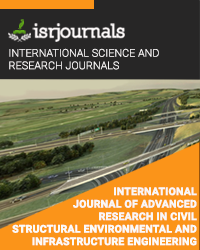fault tree analysis in construction industry for risk management
M. Angeline Swarna,R. Venkatakrishnaiah
Published in International Journal of Advanced Research in Civil,Structural,Environmental and Infrastructure Engineering and Developing
ISSN: 2320-723X Impact Factor:1.7 Volume:2 Issue:1 Year: 08 May,2014 Pages:15-21

Abstract
Construction is a risky industry and there is no other industry that requires proper application of business practices much as construction industry. Risks have a significant impact on a construction project’s performance in terms of cost, time and quality. The main objective of this research is to gain understanding of risk factors that could be for the building projects in various firms. The study aims also to investigate the effectiveness of risk preventive. The findings of this work show a lack of an iterative approach to risk management, which is a weakness in current practices. By using Fault Tree method the risks has been analyzed and remedial measures are taken. The results of this study recommended that there is an essential need for more standardization which addresses issues of clarity, fairness, roles and responsibilities, allocation of risks, dispute resolution and payment. More effort should be made to properly apply risk management in the construction industry. Based on the findings, a number of recommendations facilitating more effective risk management have been developed for the industry practitioners.
Kewords
Risk Management, Fault Tree Analysis, Risk Mitigation.
Reference
[1]. W. E. Vessely, F.F. Goldberg, N.H. Roberts, D. F. Haasl (1981), Fault Tree Hand Book’ Systems And Reliability Research, U.S. Nuclear Regulatory Commission. [2]. Risk Identification and Approach to Risk Management, Construction industry development council [3]. Risk Mitigation and Planning, Journal of Construction Engineering And Management [4]. Shyh Hwang Lee, Yu Cheng Chen (2011) – ‘Assessing Quality Management Relationship in Public Construction in Taiwan using Fault Tree Analysis’, Management Research and Practice, Vol 3 Isssue 2, pp 36- 45. [5]. Amir Reza KarmiAzari, NedaMousavi, FaridMousavi (2011), Risk Assessment model selection in construction Industry, Journal of Expert system with Application, 38, 9105- 9111 [6]. Oleg Kapliniski (2013), Risk Management of Construction Works by Means of Utility Theory - A Case Study, Journal of Procedia Engineering, 57, 533- 539 [7]. AnjanaMeel, Warren D. seider (2008), Real Time Risk Analysis of Safety Systems, Journal of Computers and chemical Engineering, 2, 827- 840 [8]. Soren Degn Eskesen, Per Tengborg, Jorgen Kampmann (2004), Guidelines for Tunneling Risk Management - International Tunneling Association, Working Group No. 2, Journal of Tunneling and ground Space technology, 19, 217-237

